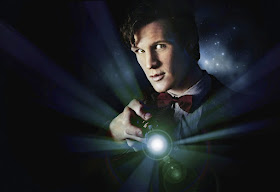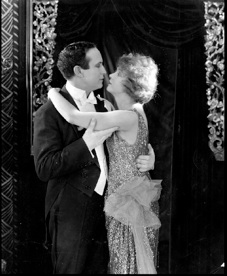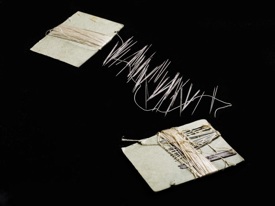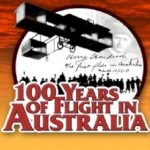At dawn on March 18, 1910 Harry Houdini made the first powered controlled flight of an aircraft on the continent of Australia. The historic flight occurred 100 year ago today in Diggers Rest near Melbourne.
Ironically, Houdini said the world may well forget his feats as an escape artist, but it could never forget that he was the first man to fly a plane in Australia.
The origins of Houdini’s first flight may have been rooted in world politics. According to
The Secret Life of Houdini
, Houdini’s Australian tour was encouraged (backed?) by a British friend, Lord Northcliffe, who was eager to alert his county and her allies to the military potential of air power (Japan was already building an air corps). What better way to showcase flight than via the king of showmen, Houdini!
Seeing a chance to get in the record books, and receive full pay during his 12 weeks of ocean travel (which would be agony for the seasick prone magician), Houdini accepted the tour, despite telling a Bristol reporter in 1904 that he would never travel to Australia because it would put him too far away from his mother.
Houdini’s first attempts to fly his 60-horsepower French Voisin (which he purchased in 1909 for $5000 and had his name emblazoned on the wings) were hampered by weather conditions and mechanical problems. Worse was the appearance of a rival aviator, Ralph C. Banks, who setup his new Wright Flyer on the same field. With Houdini was his full-time French mechanic, Antonio Brassac, who worked tirelessly on the plane. “No mother,” said Houdini, “could tend her child more tenderly than Brassac does my machine.”
 |
| Group photo at Diggers Rest |
Houdini performed at Melbourne's Opera House during the days and slept under his plane in the 40-foot hanger tent at nights (once being awakened by a poisonous tiger snake), waiting for the perfect conditions for flight. Less cautious was Ralph Banks, who attempted a flight in rough winds on the morning of March 1st. He crashed. Banks survived with a black eye and torn lips, but his plane was destroyed. Houdini helped Banks pick up what was left of his flyer.
Then on Friday, March 18, 1910, at around eight o’clock in the morning, the weather cleared and Houdini took flight in his Voisin. Houdini's historic first flight latest only a minute and reached a height of no more than twenty-five feet. But it was a controlled circuit of Plumpton's paddock at Diggers Rest witnessed by at least nine people (including Ralph Banks) who signed a witness statement. Reporters from The Argus and The Age were also present and verified the flight. Houdini would fly three times that day. On the second flight he nearly crashed on landing. The third flight was flawless, lasting three and a half minutes and reaching an altitude of 100 feet. “I know what it is to fly in real earnest,” Houdini told a reporter on the ride back to Melbourne. “I can fly now.”
 |
| Houdini flies! |
Houdini’s name was officially entered into the record books by the Australian Aerial League (formed by George Taylor who shared Lord Northcliffe’s military ambitions). He was even presented with an impressive trophy, which he proudly displayed in his New York home.
But some controversy surrounded Houdini’s flight. A 19-year-old mechanic from South Australia, Fred Custance, claimed to have beat Houdini with a controlled flight in a Bleriot XI monoplane on March 17, a day before Houdini’s flight, at Bolivar. This may explain why in later publicity material Houdini always recorded his flight as having occurred on March 16, 1910 (a date that stood until the 1980s and still sometimes causes confusion today). But it turns out Houdini didn’t have to worry. According to Houdini expert Patrick Culliton, Custance’s flight was witnessed by only one man, his sponsor Frederick H. Jones, who years later admitted the flight was “mythic” -- they made it up.
 |
| Trophy awarded to Houdini |
A more serious challenge was made after Houdini’s death on behalf of Englishman Colin Defries, who claimed he flew a Wright Model A aircraft about 115 yards at Sydney's Victoria Racecourse on December 9, 1909. The Defries claim created enough controversy (which may have more to do with regional rivalry) to prevent a special event for the 50th anniversary in 1960. While it is possible Defries flew four months before Houdini, it’s now generally accepted that Houdini’s flight was the first fully controlled flight (per the Aerial League’s criteria), and even Defries defenders admit that “Houdini flew the wings off Defries.”
After his Australia tour (which included several even more spectacular flight exhibitions at Rosenill racetrack near Sydney), Houdini put the Voisin into storage in England. Although he announced he would use it to fly from city to city during his next tour -- and even promised to leap from it handcuffed -- Houdini never flew again. Houdini sold the plane in 1913, but exactly what happened to Houdini’s historic Voisin has long been a mystery [See;
Did Houdini’s Voisin land in the hands of Chung Ling Soo?].
Today Australia takes great pride in its association with Houdini and aviation history. The Perth Mint issued commemorative coins and stamps. A new monument has been erected at Diggers Rest. And Houdini’s historic flight was celebrated with a special ceremony featuring a Houdini-Centenary air-show, magic performances, a one-third scale model of Houdini’s Voisin.
While the world has certainly not forgotten Houdini the escape artist, it now appears Houdini accomplishments as a pioneer aviator will also be remembered.
 |
| Monument at Diggers Rest |
Sources:
- Houdini!!! The Career of Ehrich Weiss by Ken Silverman, pages 142-155.
- The Secret Life of Houdini by Kalush & Sloman, pages 239-245.
- Genii Forums - Diggers Rest gears up for Houdini celebrations - post #211243 by houdini’s ghost.

























